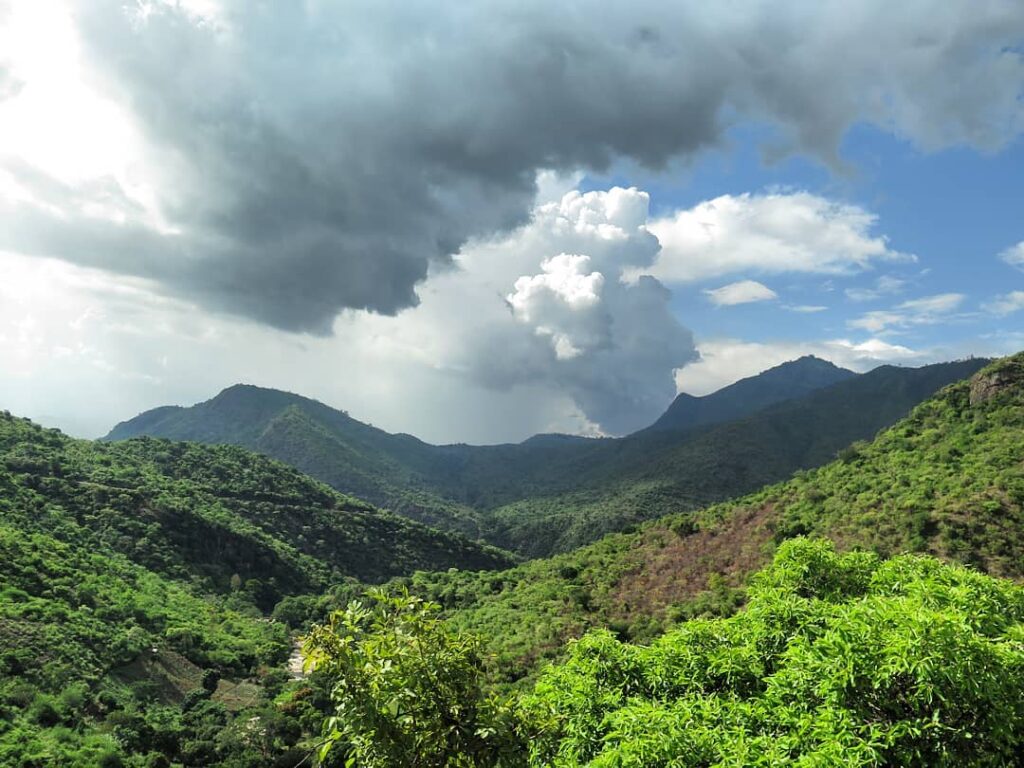Trees Create Wind?

“Forests are complex self-sustaining rainmaking systems, and the major driver of atmospheric circulation on Earth,” says Anastassia Makarieva of the Petersburg Nuclear Physics Institute. This is an interesting and controversial statement, termed the Biotic Pump theory, with multiple implications and ramifications. Put simply:
Traditional theory: Trees grow when and where the winds bring the rain.
Biotic Pump theory: Wind is created when air (and rain) is drawn toward where the trees are growing.
At ForestPlanet we recognize the important role that trees play with regards to water retention and filtration, and have discussed the topic here and here. The Biotic Pump theory suggests that there is a more fundamental connection between trees and global climate, and localized rainfall, than previously understood.
Traditional meteorology claims that ocean evaporation is responsible for most of the atmospheric moisture that condenses in clouds and falls as rain. However, this model does not take into account the role of vegetation and, in particular, trees, which can act like water geysers. Tree roots capture water from the soil for photosynthesis, and microscopic pores in leaves release unused water as vapor into the air. The process, the arboreal equivalent of sweating, is known as “transpiration”. A single mature tree can transpire hundreds of liters of water a day.
When this transpired (gaseous) water vapor from forests condenses into clouds, it becomes a liquid and therefore occupies less volume. This state transformation from gas to liquid reduces air pressure, and this low pressure region draws air in horizontally from areas with less condensation.
To better visualize the concept, the ‘pump’ starts when water vapor over coastal forests condenses as rain, which lowers the air pressure and creates winds that draw in moist ocean air. The idea is that this initial rainfall initiates a ‘leap frog’ condensation-transpiration cycle that pulls moist air inland. The Biotic Pump theory suggests that forests not only release water that will come down further inland as rain, but that forests also create the winds that carry the rains. Cycles of transpiration and condensation can spin up winds that deliver rainfall thousands of miles inland.
It’s a fascinating concept, not without detractors. The ramifications, if true, are quite significant with regards to the best locations for reforestation projects. At ForestPlanet we certainly are not climatologists, but we are very keen on getting millions more trees sustainably planted around the world, and that requires having some understanding and appreciation of where the water comes from to make arboreal growth possible.
To that end we’ll be researching the Biotic Pump idea further in the coming months, conducting interviews, and discussing the implications with regards to specific regions and specific reforestation projects. Do the trees that we plant in Tanzania help pull winds and water up from the South Atlantic into the Ethiopian hills? Does the Amazon basin pump have direct effect on rainfall in California’s Sierra Nevada mountain range, while also driving the air currents that power thousands of wind turbines in the region? Many people feel the answer is yes, yes, and yes.
Even if only partly true, the Biotic Pump concept forces us to think more broadly, and not be too localized with regards to specific tree planting projects. As we’ve said numerous times: Trees Planted Anywhere Help Everyone Everywhere, or put another way…wherever you plant trees on our small planet, it’s All Here.

